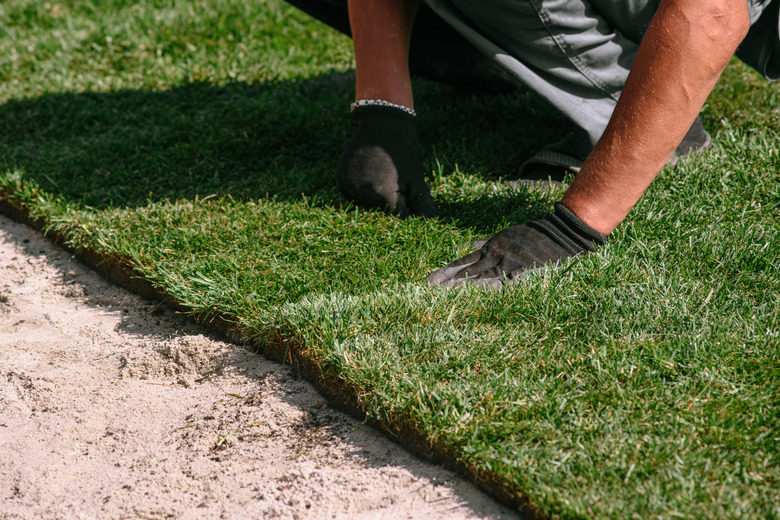How To Fill A Gap In New Sod
We may receive a commission on purchases made from links.
New sod is usually cut into rectangles to make transportation and installation easier. After the area is prepped, the rectangles of sod are set down, each piece tightly butted up against the surrounding pieces.
Often the installers leave gaps in the sod, sometimes intentionally to maintain a neater pattern and other times simply due to negligence. There are a few ways you can fill in a gap in your new sod.
Why Gaps Occur
Why Gaps Occur
When sod is placed around circular beds or a curved walkway or patio, there will naturally be gaps between pieces. This is because the sod is cut in straight lines, while the area where sod is being installed is curved. While one side of the sod piece abuts the curved area, the areas between sod sections fail to meet, leaving small pie-shaped gaps. Gaps may also occur due to a miscalculation in the amount of sod required or even simply due to an oversight when installing.
Remove Gaps With Topdressing
Remove Gaps With Topdressing
One solution for removing gaps in your new sod is to apply topdressing to the lawn. Topdressing mixtures can be purchased at your local lawn and garden store. Often simply using compost is sufficient. Locate the gaps in the sod, as well as any abnormally low areas. Place the topdressing in both the gaps and on the low areas to make them level with the rest of the lawn. Keep the areas watered, and over time the grass will naturally grow into the topdressing. Eventually the lawn will be of a uniform height, revealing no bare spots or gaps.
Remove Gaps With Patching
Remove Gaps With Patching
A faster solution with instant results is to patch the gaps by placing smaller pieces of sod into them. You may need to purchase several additional sections of sod to accomplish the patching. Or there may be leftover pieces from the installation that are oddly shaped or smaller than the rest. These make excellent patches.
If necessary, cut the sod to the proper shape and size by using grass clippers. Put a small amount of compost in the gap, and then press the patch into place. Water it regularly, and soon it will extend its roots into the ground and become a permanent part of your lawn.
Remove Gaps by Seeding
Remove Gaps by Seeding
Using grass seed in the gaps is yet another solution. It is important that you use the same type of grass seed as the grass in your yard. Place about an inch of compost into each gap, and sprinkle the grass seed on top of it.
Different grass seeds require different applications, so read the instructions included with the seed you purchase. Water the seed according to the instructions. The biggest challenge when seeding is preventing birds and squirrels from eating the seed. Take this into consideration before choosing this option.
